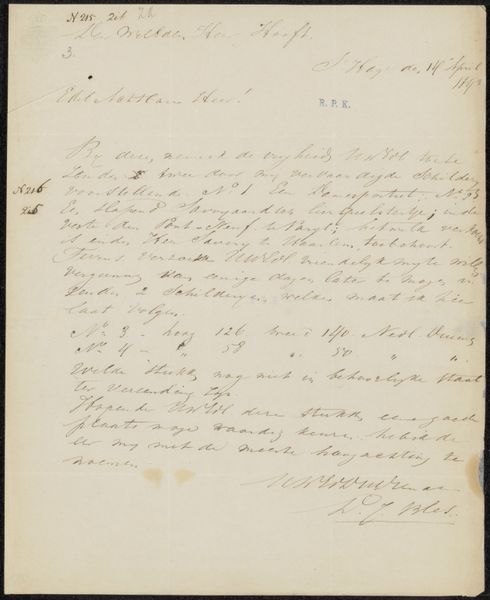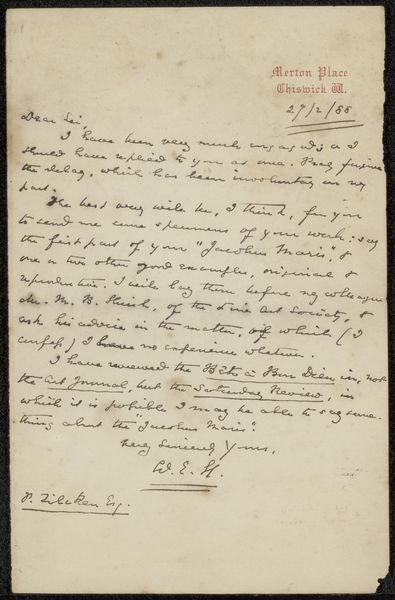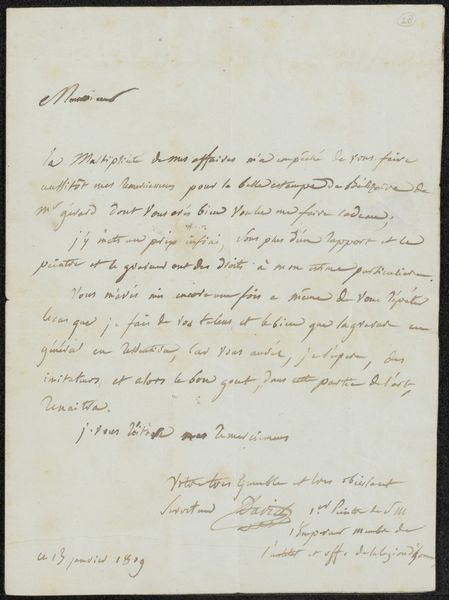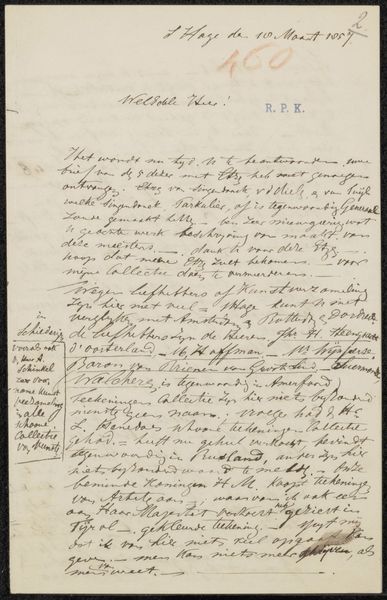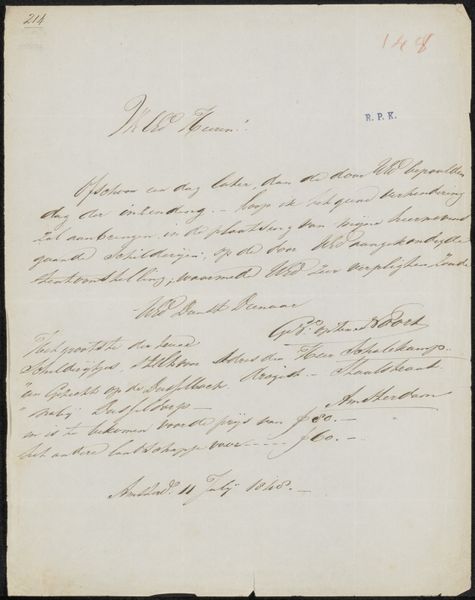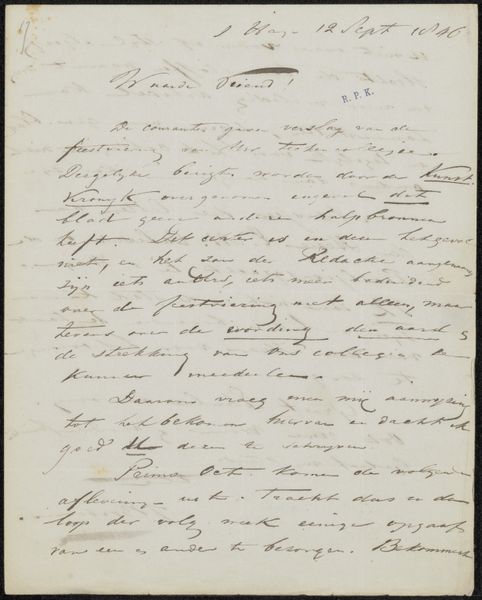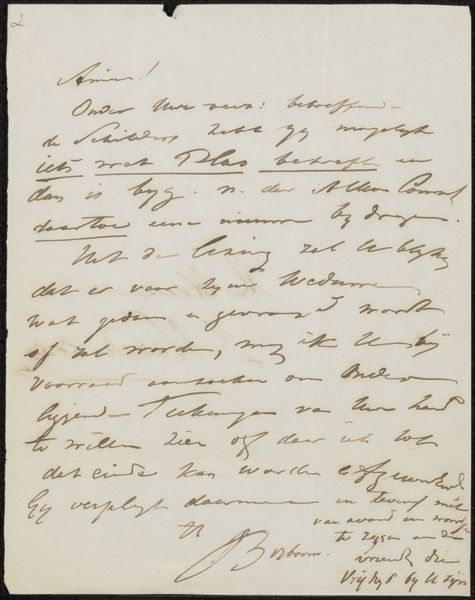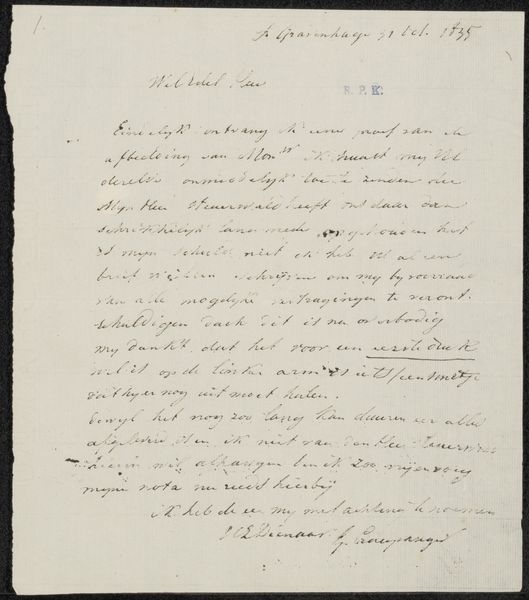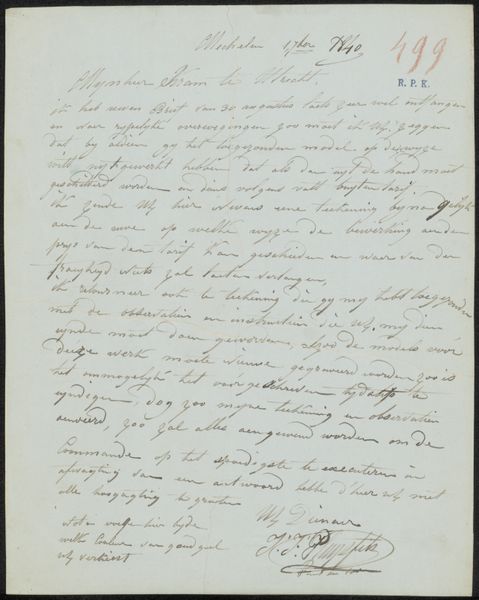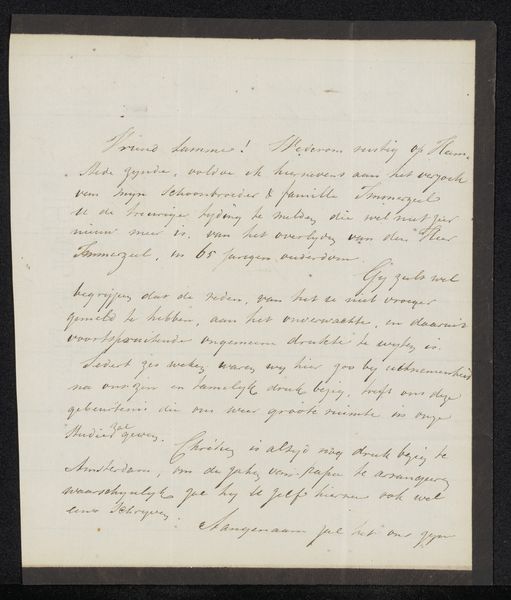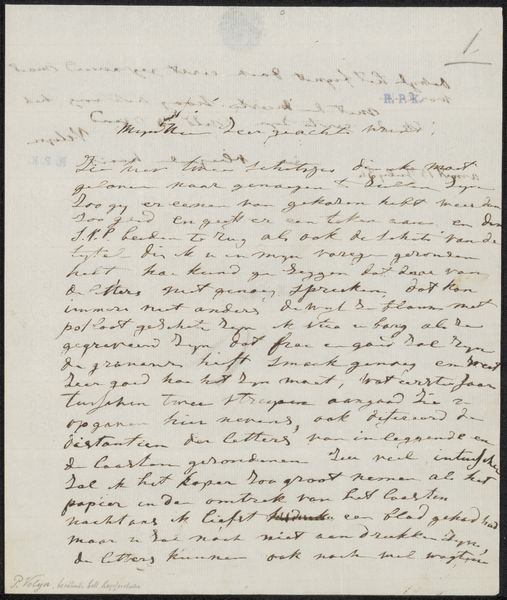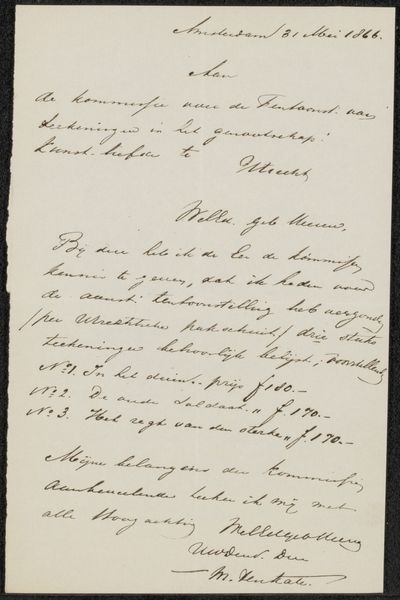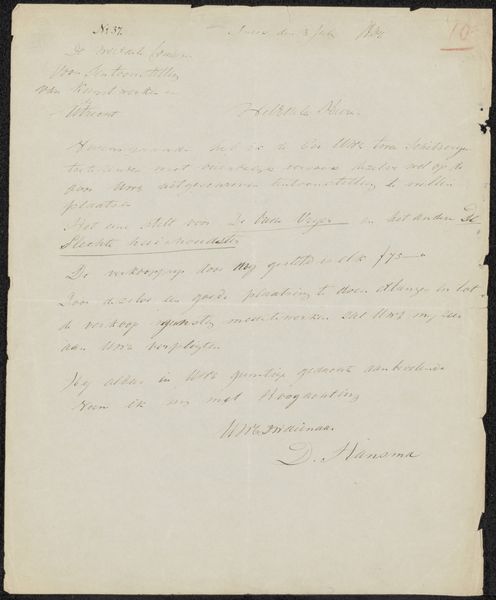
Brief aan de Commissie van de Tentoonstelling van Levende Meesters in Den Haag 1829 - 1886
0:00
0:00
drawing, paper, ink, pen
#
drawing
#
pen sketch
#
sketch book
#
paper
#
personal sketchbook
#
ink
#
idea generation sketch
#
ink drawing experimentation
#
pen-ink sketch
#
ink colored
#
pen work
#
sketchbook drawing
#
pen
#
sketchbook art
Copyright: Rijks Museum: Open Domain
Curator: I’m struck by the immediate intimacy of this sketch. It's unassuming but holds a certain captivating quality, isn’t it? Editor: Indeed. Let's delve into the details. What we have here is "Brief aan de Commissie van de Tentoonstelling van Levende Meesters in Den Haag" or "Letter to the Committee of the Exhibition of Living Masters in The Hague," created by Petrus Marius Brouwer between 1829 and 1886. The medium employed appears to be primarily pen and ink on paper. Curator: It is a letter! Now, thinking about the physical production of it makes the context of its creation all the more fascinating. This wasn’t dashed off on a laptop, was it? The writing tool itself, the paper – each implies a degree of care and intentionality in a world where those materials would have been valued differently than they are today. It looks more like a carefully worded business letter dealing with money and price estimates. Editor: Absolutely. Consider the institutional backdrop: Brouwer corresponds with the Exhibition Committee. Such entities were gatekeepers, shaping the art world. Submitting work wasn’t just about artistic expression, but engaging with an entire system of selection, display, and, ultimately, validation. This tells us a lot about how artists sought recognition. It seems a lot has happened in an artist’s studio and workshop even to submit here, right? Curator: Precisely. Look at the script itself. The hand, the ink. There’s a relationship here between artist and means of production—his daily toil if you like. I wonder how that played into Brouwer's artistic identity? Was being seen as "craftsperson" also a marker of success? Editor: That's a valid point. Think, too, of the intended audience: fellow artists, patrons, members of a budding art establishment—the social circles in which such displays held particular significance, but where judgments may have also carried social and economic ramifications. What did success or failure in such public exhibitions mean for the individual, the workshop, and his relationship to patronage? Curator: Well, looking closely at his meticulous handwriting it speaks to me now of patience and investment. Editor: It gives us pause to think how the system itself was constructed to privilege some hands over others, doesn't it? Curator: Yes, indeed.
Comments
No comments
Be the first to comment and join the conversation on the ultimate creative platform.
